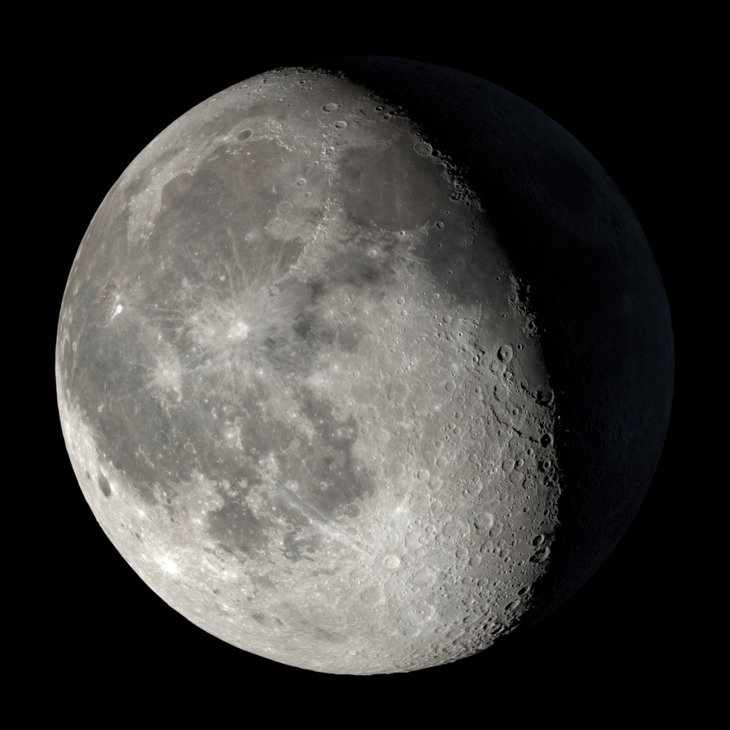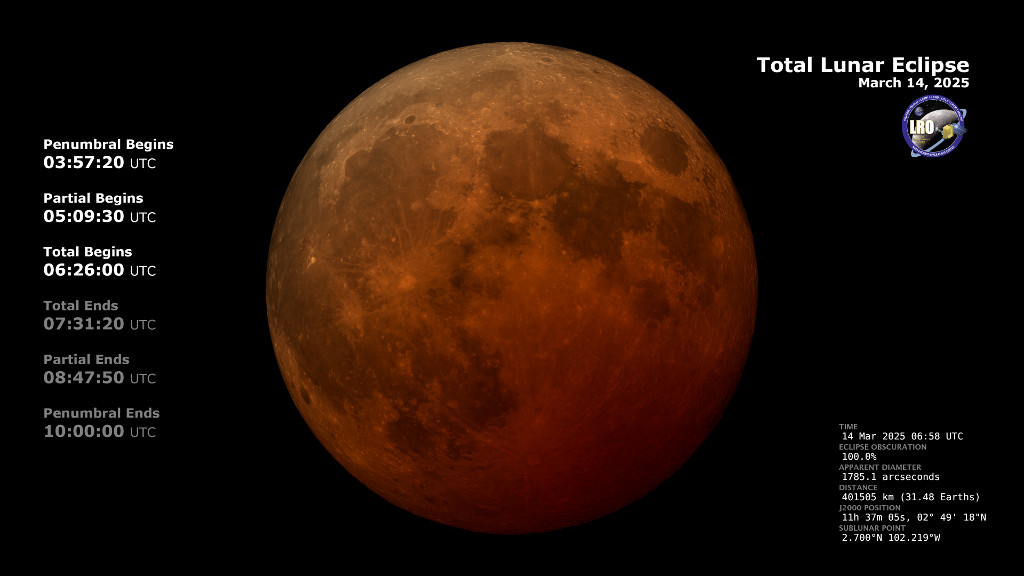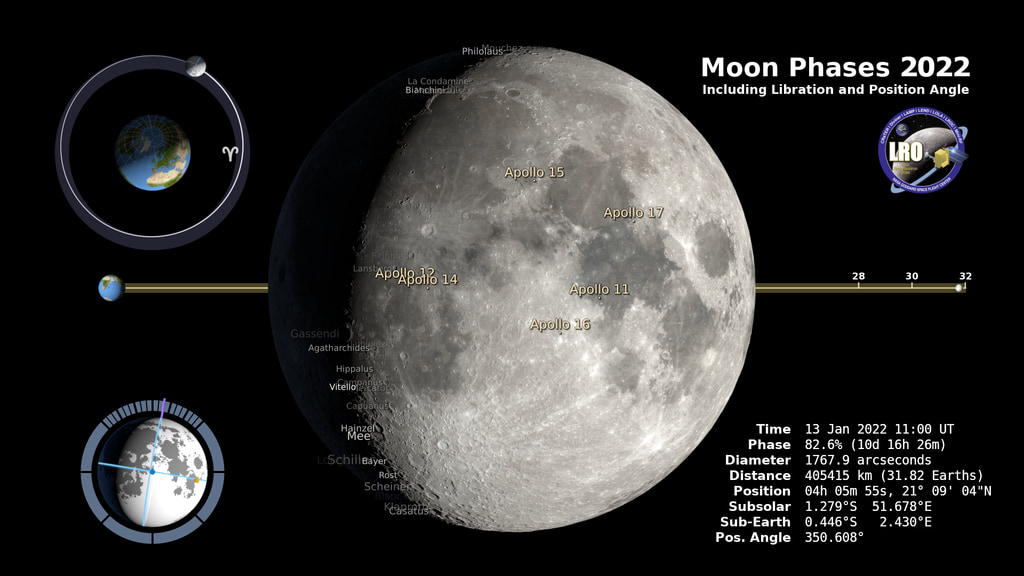November 8, 2022 Total Lunar Eclipse: Telescopic View
Also see the shadow diagram and visibility map for this eclipse.
The November 8, 2022 total lunar eclipse is the second of the year. The Moon is traveling above the Pacific Ocean during this eclipse, so that both Hawaii and Alaska are well situated to witness the entire event from beginning to end. But totality is also visible in the early morning hours before moonset in all of North and Central America, and in the early evening after moonrise in Asia and Australia. This is the last total lunar eclipse for a while – the next one occurs on March 14, 2025.
Celestial north is up in this imagery, corresponding to the view from mid-northern latitudes. Rotating the images by 180 degrees would create the south-up view for southern hemisphere observers. The obscuration percentage in the table is the fraction of the Moon covered by the Earth's umbra, the part of its shadow in which the Sun is completely blocked. The part of the shadow in which the Sun is only partially blocked is called the penumbra.
The animations on this page run from 7:20:00 to 14:59:50 UTC, which is also the valid range of times for this Dial-a-Moon. The exposure setting of the virtual camera changes around totality in order to capture the wide dynamic range of the eclipse. The parts of the Moon outside the umbra during the partial phases are almost as bright as an ordinary full moon, making the obstructed parts appear nearly black. But during totality, our eyes adjust and reveal a range of hues painted on the Moon by all of Earth's sunrises and sunsets.
All phases of a lunar eclipse are safe to view, both with your naked eye and an unfiltered telescope.
The appearance of the Moon during the November 2022 total lunar eclipse. Includes annotations of the contact times and various eclipse statistics.
The appearance of the Moon during the November 2022 total lunar eclipse. The EXR frames are the original rendered images, while the TIFFs combine these into a single image sequence. Both include an alpha channel.
Credits
Please give credit for this item to:
NASA's Scientific Visualization Studio
-
Visualizer
- Ernie Wright (USRA)
-
Scientist
- Noah Petro (NASA/GSFC)
-
Technical support
- Laurence Schuler (ADNET Systems, Inc.)
- Ian Jones (ADNET Systems, Inc.)
Release date
This page was originally published on Wednesday, September 28, 2022.
This page was last updated on Wednesday, January 29, 2025 at 11:53 AM EST.
Missions
This page is related to the following missions:Series
This page can be found in the following series:Datasets used
-
DEM (Digital Elevation Map) [LRO: LOLA]
ID: 653 -
DE421 (JPL DE421)
ID: 752Planetary ephemerides
This dataset can be found at: http://ssd.jpl.nasa.gov/?ephemerides#planets
See all pages that use this dataset -
LROC WAC Color Mosaic (Natural Color Hapke Normalized WAC Mosaic) [Lunar Reconnaissance Orbiter: LRO Camera]
ID: 1015This natural-color global mosaic is based on the 'Hapke normalized' mosaic from LRO's wide-angle camera. The data has been gamma corrected, white balanced, and range adjusted to more closely match human vision.
See all pages that use this dataset
Note: While we identify the data sets used on this page, we do not store any further details, nor the data sets themselves on our site.





